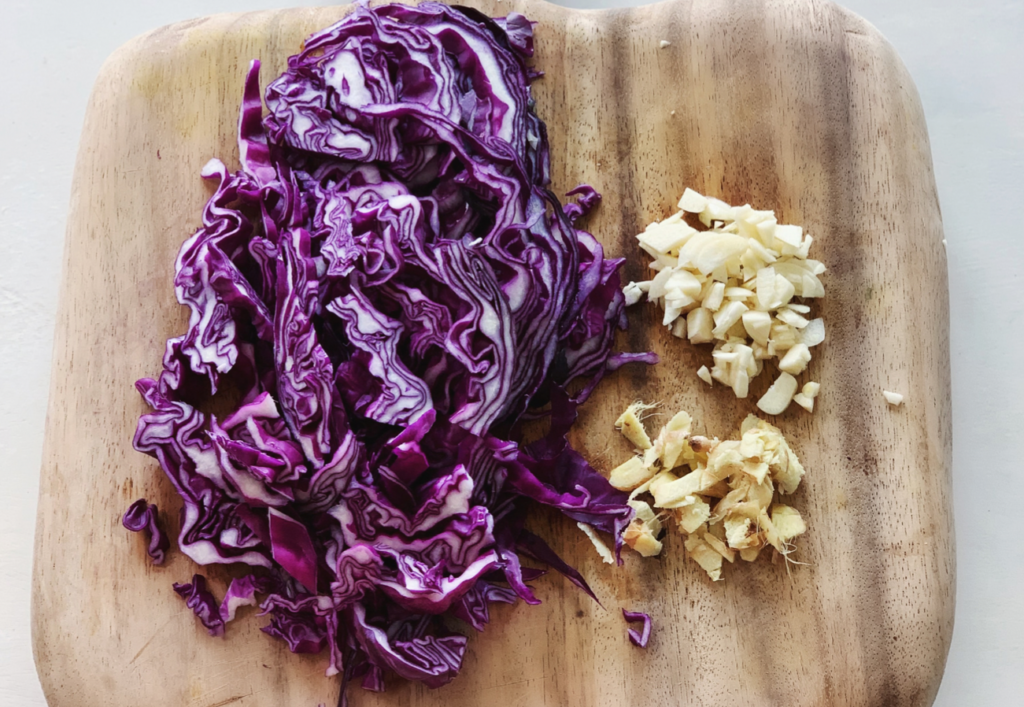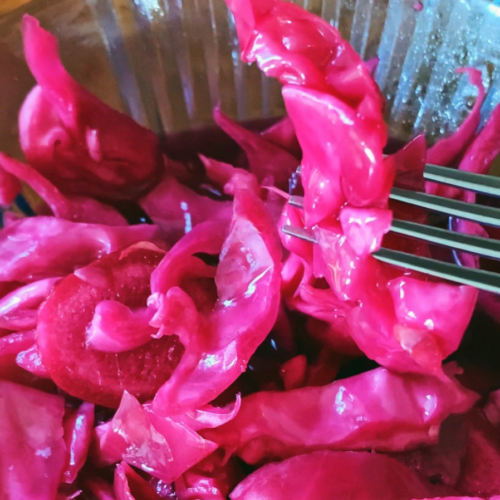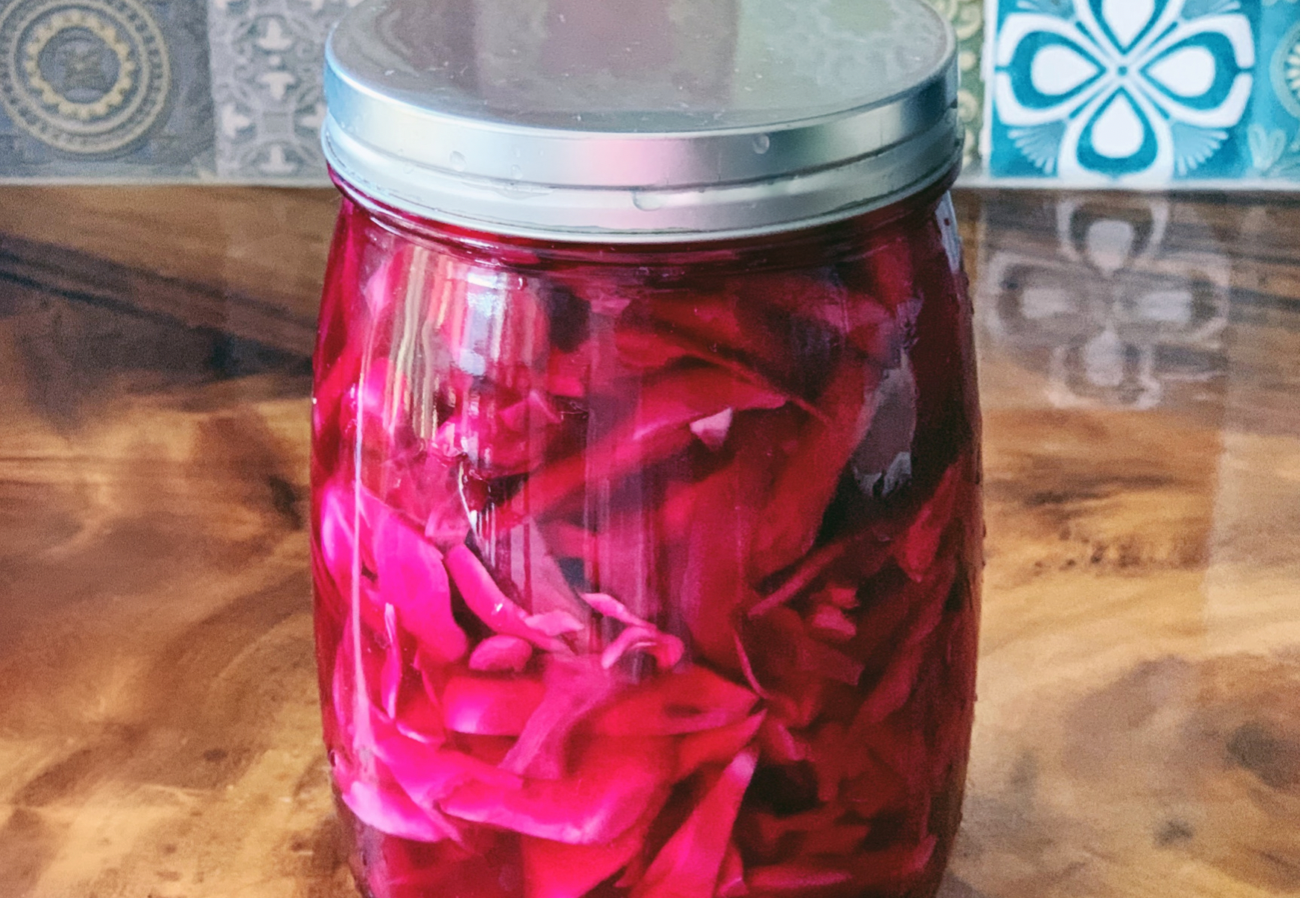It’s not a secret that there’s a link between gut and skin health. That’s why it’s essential to maintain healthy bacteria levels while keeping harmful bacteria at bay, which may be linked to acne and skin inflammation. Probiotics are beneficial bacteria that fight gut inflammation and help bodies absorb certain nutrients that benefit the skin.
Unfortunately, a good quality probiotic supplement can be expensive and come with the risk of just being shed in the stool. So before you rush to buy probiotic supplements, try a better alternative, like including probiotic-rich foods in your meals
If you need help from “the good guys” in your gut, try making probiotic-rich homemade sauerkraut! The fermentation process makes sauerkraut particularly beneficial, which happens when yeast and bacteria naturally present on the cabbage and the air comes into contact with sugars in the cabbage. These conditions promote healthy bacteria, which may positively influence your microbiome without damaging your wallet.

Traditional sauerkraut is usually made from green cabbage, which tastes just as good as red cabbage. However, I like red cabbage for its vibrant colour, provided by skin-loving antioxidants anthocyanins with anti-inflammatory and anti-ageing properties.
This recipe also is simplified and doesn’t involve canning and a long list of ingredients. All you need is some clean water and a sterilised sealable jar.

Super Easy Probiotic-Rich Homemade Purple Sauerkraut
Ingredients
- 1 red cabbage small
- 1 tsp sea salt
- 1 tbsp ginger diced
- 2 cloves garlic diced
Instructions
- Cut the cabbage in half. Cut out the thick core and stem end and compost or discard them.
- Thinly slice the cabbage into shreds or small pieces.
- Grate or thinly slice raw garlic and ginger.
- Mix all the ingredients and then tightly pack into a clean, sealable jar.
- In a bowl, stir clean water and salt until dissolved.
- Pour the saltwater into a jar, making sure all the cabbage is submerged in the brine.
- Close the jar and let it sit in a shady spot at room temperature for at least a week.
- You can taste the cabbage after three days, and it should have a pleasant, slightly sour smell and taste. You should see some bubbles on top, which indicates fermentation. Leave it for fermenting for another five days for cabbage to develop more flavour.
- Once you are happy with the taste, move it to a fridge. Eat a tbsp a day and the batch within a month.
